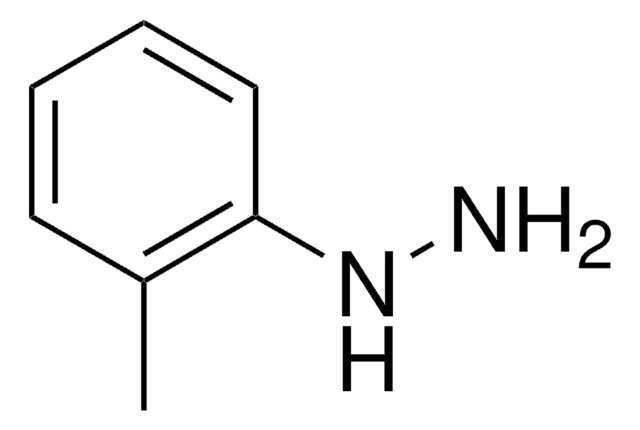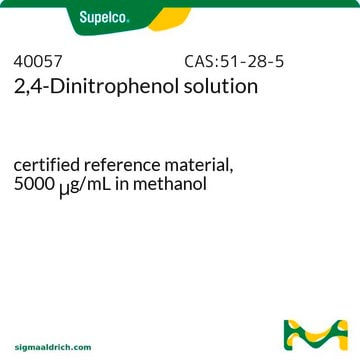42155
2,3-Dinitrophenol
moistened with water, ≥98.0% (HPLC)
About This Item
Productos recomendados
Ensayo
≥98.0% (HPLC)
calidad
moistened with water
contiene
~20% water as stabilizer
mp
141-145 °C
cadena SMILES
Oc1cccc(c1[N+]([O-])=O)[N+]([O-])=O
InChI
1S/C6H4N2O5/c9-5-3-1-2-4(7(10)11)6(5)8(12)13/h1-3,9H
Clave InChI
MHKBMNACOMRIAW-UHFFFAOYSA-N
Palabra de señalización
Danger
Frases de peligro
Consejos de prudencia
Clasificaciones de peligro
Acute Tox. 3 Dermal - Acute Tox. 3 Inhalation - Acute Tox. 3 Oral - Aquatic Chronic 2 - Expl. 1.1 - STOT RE 2
Código de clase de almacenamiento
4.1B - Flammable solid hazardous materials
Clase de riesgo para el agua (WGK)
WGK 3
Punto de inflamabilidad (°F)
Not applicable
Punto de inflamabilidad (°C)
Not applicable
Equipo de protección personal
Eyeshields, Faceshields, Gloves, type P2 (EN 143) respirator cartridges
Elija entre una de las versiones más recientes:
¿Ya tiene este producto?
Encuentre la documentación para los productos que ha comprado recientemente en la Biblioteca de documentos.
Filtros activos
Nuestro equipo de científicos tiene experiencia en todas las áreas de investigación: Ciencias de la vida, Ciencia de los materiales, Síntesis química, Cromatografía, Analítica y muchas otras.
Póngase en contacto con el Servicio técnico











